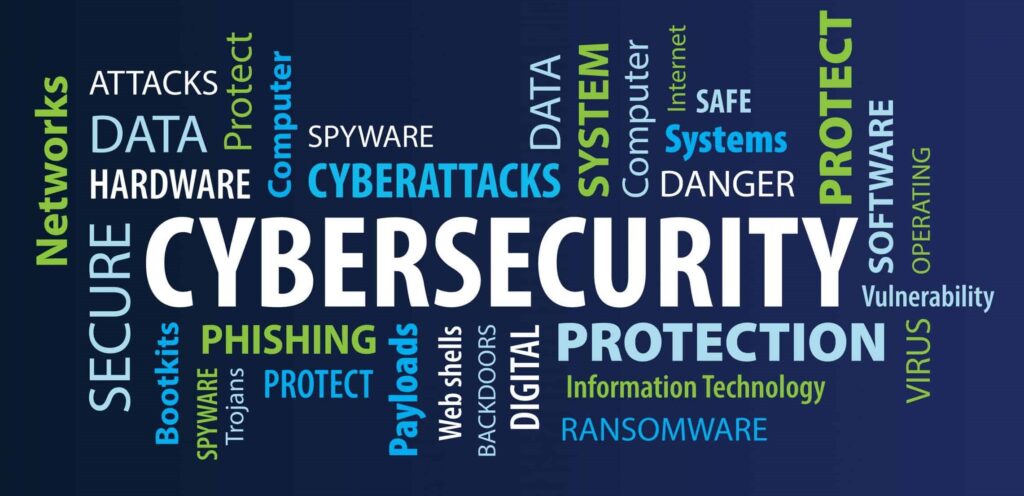A comprehensive guide to Cybersecurity in 2024:
Introduction to cybersecurity:
The Internet has become an undeniable part of our lives. From online banking and shopping to connecting with loved ones and pursuing careers, we rely on this vast digital landscape for a multitude of tasks. However, this interconnectedness comes with a hidden danger – the threat of
cybercrime
.
In today’s digital Wild West, cybercriminals operate with increasing sophistication. They employ a diverse arsenal of tools and tactics to target individuals, businesses and even entire nations. This blog serves as an essential guide for navigating the complexities of
cybersecurity
in 2024.
The evolving threat landscape: Understanding the Enemy: –
Cybercrime is a thriving industry, fueled by innovation and a constant hunger of data. Attackers are constantly developing new methods to exploit vulnerabilities and bypass security measures. Some of the prevalent threats you need to be aware are-
-
Phishing Attacks:
These cunning attempts at deception arrive in the form of emails, text messages or even social media posts disguised as legitimate sources. They aim to trick into revealing sensitive information like passwords or credit card details or clicking on malicious links that can download malware onto your device.

Malware:
This malicious software encompasses a wide range of threats, including viruses, worms, ransomware and spyware. Once installed on a device, malware can steal data, corrupt files, disrupt operations or even lock you out of your system entirely. Ransomware is a particularly insidious form that encrypts your data, rendering it inaccessible until you pay a ransom to regain control.
-
Social Engineering:
This tactic preys on human psychology. Attackers exploit emotions like fear, trust or curiosity to manipulate individuals into taking actions that compromise their security. This might involve impersonating a trusted authority figure, creating a sense of urgency to bypass caution or offering seemingly attractive deals to lure victims.
-
Data breaches:
When authorized individuals gain access to a database containing sensitive information like personal details, financial records or health data, it constitutes a data breach. These breaches can have devastating consequences for businesses and individuals alike, leading to identity theft, financial losses and reputational damage.
-
Supply Chain Attacks:
This approach targets vulnerabilities within a trusted vendor or supplier in a network. Once compromised, attackers can gain a backdoor entry point to infiltrate the main system, potentially granting access to a vast amount of sensitive data.
Some fundamental security measures of cybersecurity are:
While the threat landscape can seem daunting, there is good news. By adopting a proactive approach and implementing best practices, you can significantly reduce your risk of falling victim to a cyberattack. Some fundamental security measures are-
-
-
-
-
Strong Passwords and Multi Factor Authentication (MFA):
This is the first line of defense. Ditch the simple passwords and create unique, complex combinations for each account. Ideally, use a password manager to generate and store these passwords securely. Multi-factor authentication adds an extra layer of security, requiring a secondary verification step (like a code sent to phone) in addition to password when logging in.
-
Software Updates:
Software updates often contain critical security patches that fix vulnerabilities exploited by attackers. Make a habit of installing updates for operating systems, applications and firmware promptly whenever they became available.
-
Phishing Awareness:
Develop a healthy dose of skepticism towards unsolicited emails, messages and links. Never share personal information unless you are absolutely certain of the sender’s legitimacy. Look for red flags like grammatical errors, inconsistencies in tone or formatting and suspicious URLs.
-
Data Backups:
Regularly backup your important data on a separate device or cloud storage solution. This ensures a safety net in case of data loss due to malware attacks or hardware failures.
-
-
-
The rise of Artificial Intelligence (AI):
AI can be a double-edged sword. While it can enhance security by automating threat detection and analysis, attackers can also leverage AI to launch more sophisticated attacks.
-
The expansion of the Internet-of-Things (IoT):
As more devices become connected to the Internet, the attack surface expands. Securing these devices will be crucial for preventing large scale breaches.
-
Zero-trust security:
This approach assumes no network or user is inherently trustworthy. Every connection and access attempt will require rigorous verification.
Stay Vigilant, stay secure:
Cybersecurity
is an ongoing process, not a one-time fix. By staying informed about the latest threats and adopting best practices, you can significantly reduce the risk of falling victim to a cyberattack. Remember, a proactive approach is essential to safeguarding digital life.
-
Leave a Reply